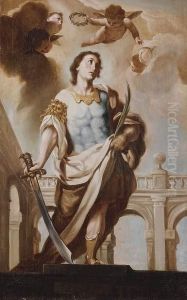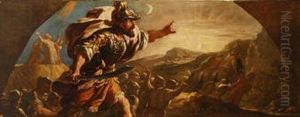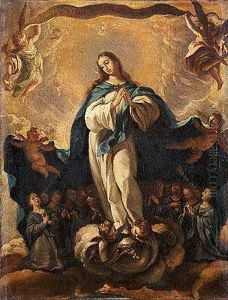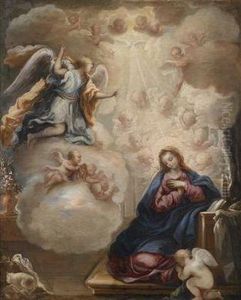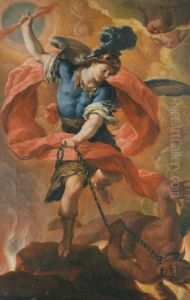Acisclo Antonio Palomino Y De Castro Paintings
Acisclo Antonio Palomino de Castro y Velasco was a Spanish painter, scholar, and writer on art, often considered as one of the most important Spanish art historians of his time. He was born on 1655 in Bujalance, near Córdoba, Spain and showed an early interest in the arts. He was not only a talented painter but also became the most prominent art theorist and historian of his era in Spain.
Initially trained by his father, who was also a painter, Palomino later moved to Madrid to further his studies. He became a pupil of Juan de Alfaro, who was a follower of Velázquez. This connection helped Palomino to gain access to the royal court, where he eventually became a court painter under Charles II and continued to serve in the same capacity under Philip V. His work as a painter includes religious compositions, frescoes, and portraits, with notable works in the churches and palaces of Madrid, Valencia, and Granada.
However, Palomino is best remembered for his writings on art. His most significant contribution to art history is his three-volume work 'El Museo pictórico y escala óptica', published between 1715 and 1724. The first volume, 'El Parnaso español pintoresco laureado', focuses on theoretical aspects of painting and a review of famous Spanish painters. The second, 'El Palacio de la Pintura', is practical and educational in nature, offering a guide to the technique and practice of painting. The third volume, 'El Templo de la fama', provides biographies of Spanish painters and Italian painters who worked in Spain.
Palomino's work was instrumental in documenting the biographies and works of many Spanish artists who would have otherwise been forgotten. His detailed observations provide valuable insights into the practices and techniques of the Baroque period. He is often referred to as the 'Spanish Vasari' in reference to Giorgio Vasari, the Italian art historian whose works inspired Palomino.
Despite his importance in the field of art history, Palomino's own paintings, although proficient, did not achieve the same level of fame as his writings. Nevertheless, his influence as an art historian is lasting, and his works continue to be a principal source for the study of Spanish Baroque art. Acisclo Antonio Palomino died in 1726 in Madrid, leaving behind a legacy as a key figure in the historiography of Spanish art.
